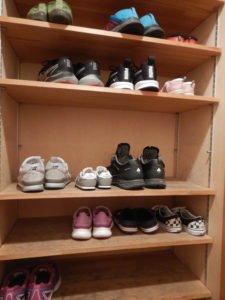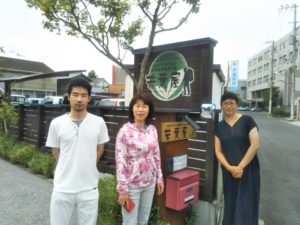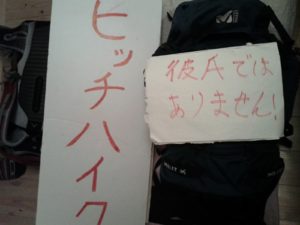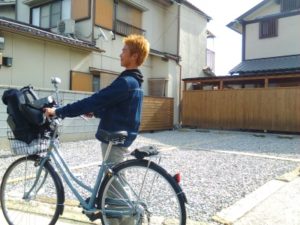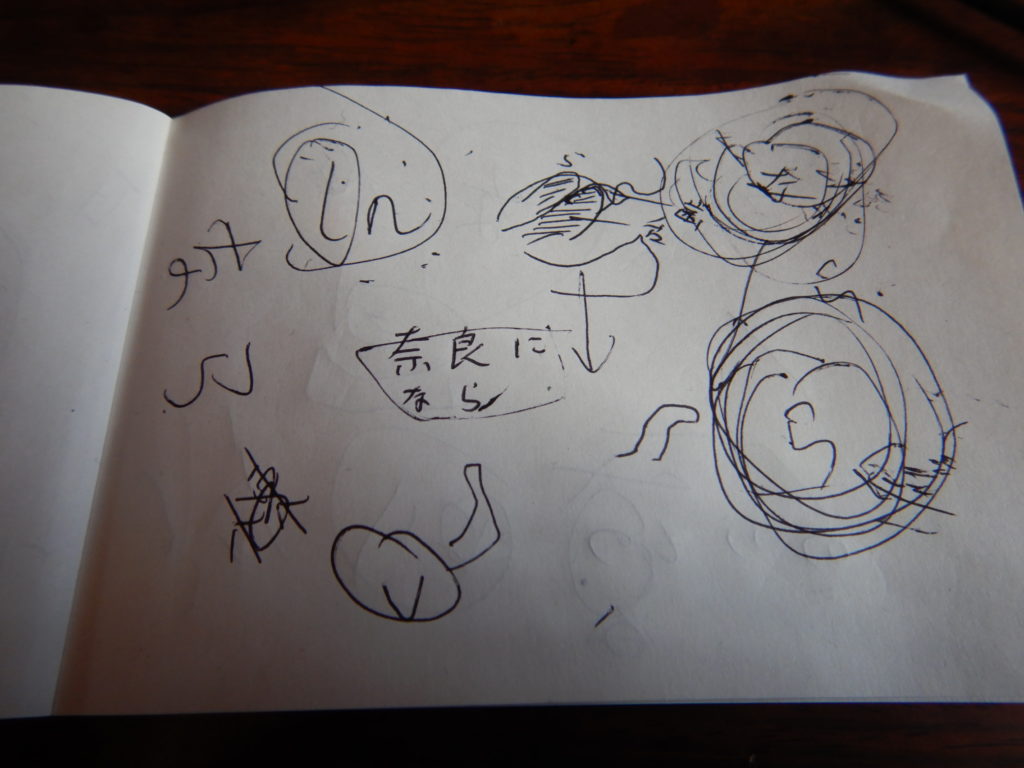
先日、中国・広東省は広州市からある男性が若葉屋にやって来ました。彼は日本語堪能な自称「オタク」。オンラインゲームのチャットや日本語の小説などで獲得したという語彙力は凄まじいものです。私は彼の話す日本語は100%理解できるのですが、「私の日本語がまったく通じない日本人もいるよ」と言うのです。一体どういうことだろうか。彼との会話を注意深く続けていると、どうやらある特定の音が明らかに日本語母語話者とは違うことに気づきました。
A man from Guangzhou, Guangdong Province, China, stayed at Guest House Wakabaya. He spoke Japanese fluently and called himself “otaku (geek)”. His vocabulary, which he has acquired through online game chatting and Japanese novels, was awesome. I could understand 100% of the Japanese he spoke, but he said, “There are Japanese people who can not understand my Japanese at all.” Why? As I continued our conversation carefully, I realized that certain sounds were distinctly different from those of native Japanese speakers.
「『らりるれろ』って言ってみて。」
“Say ‘ra, ri, ru, re, ro’.”
「ら、り、る、れ、ろ。ら、り、る、れ、ろ。」
“ra, ri, ru, re, ro. ra, ri, ru, re, ro.”
んー、少しおかしい。しかし、まったく通じないほどでもないようにも思う。その後も会話を続けました。
Hmmm, a bit wrong. But I don’t think it’s so bad that I can’t communicate at all. We continued our conversation afterward.
いや、ラ行以外にもおかしい音がある!
No, there are other wrong sounds besides the “r” line!
「『なにぬねの』って言ってみて。」
“Say ‘na, ni, nu, ne, no’.”
「な、に、ぬ、ね、の。な、に、ぬ、ね、の。」
“na, ni, nu, ne, no. na, ni, nu, ne, no.”
あやしい。
Something wrong.
「もう一回、『らりるれろ』言ってみて。」
“Say again ‘ra, ri, ru, re, ro’.”
「ら、り、る、れ、ろ。ら、り、る、れ、ろ。」
“ra, ri, ru, re, ro. ra, ri, ru, re, ro.”
かなりあやしいぞ!
Wrong!
なんと、彼の母語である現代広東語ではn音とl音の区別がないのだと、彼が教えてくれました。しかし、そのことを知っている彼であっても、発音する「らりるれろ」は「なにぬねの」に限りなく近く、「なにぬねの」は「らりるれろ」に限りなく近くなってしまっているのです。さらに、本人にはその自覚がなく、私が間違いを指摘したときでも、「何が違うのかわからない」という様子でした。そんなやり取りの際のメモが上の写真です。舌の位置や形の絵もあります。
Surprisingly, he told me that there is no distinction between the “n” and “l” sounds in modern Cantonese, his mother tongue. However, even though he knew it, his “ra, ri, ru, re, ro” was very close to “na, ni, nu, ne, no” and his “na, ni, nu, ne, no” was very close to “ra, ri, ru, re, ro”. Furthermore, he was not aware of it, and even when I pointed out his mistakes, he didn’t recognize the difference. The note made during our conversation contains illustrations of the position and shape of the tongue (picture above).
語学オタクである私からすれば、興味深いことこの上ありません。そうやって、「らりるれろ、なにぬねの」をやっているうちに、まさにドンピシャな論文を発見しました。現代広東語ではn音とl音の弁別が消失していること、日本語のナ行とラ行の混同が常に起こるというよりは、前後の音環境の影響を強く受けて発生すること、さらに、ナ行とラ行の混同を広東語話者自身が認識していないこと。これら、論文で述べられていることはまさに、私の目の前の彼に当てはまっていました。
As a language geek, this is really interesting to me. While we were repeating “ra, ri, ru, re, ro, na, ni, nu, ne, no”, I found an exact thesis. The paper showed that the “n” and “l” sound discrimination has disappeared in modern Cantonese, that the surrounding sound environment strongly influences the confusion between Japanese “n” and “r” sounds, and that Cantonese speakers themselves are not aware of that aural confusion. Exactly what is described in the paper was true for him in front of me.
若葉屋をチェックアウトして、早めに高松空港に着いて香港行きのフライト(香港と広州は近い)を4時間ぐらい待つという彼に、先の論文を印刷して手渡しました。みなさんもよろしければ、どうぞ。
I printed out the thesis and handed it to him at check-out as he would arrive at Takamatsu Airport early to wait about four hours for his flight back to Hong Kong (Hong Kong and Guangzhou are close). Would you like it too?
大久保雅子(2010)『日本語学習におけるナ行音・ラ行音の聴取混同–香港広東語母語話者を対象として』早稲田大学大学院日本語教育研究科
Masako OKUBO (2010) “Auditory confusion of ‘n’ and ‘r’ sounds in Japanese language learning: a case study of native speakers of Hong Kong Cantonese” Waseda University Graduate School of Japanese Applied Linguistics
https://waseda.repo.nii.ac.jp/record/24931/files/WasedaNihongoKyoikugaku_07_Okubo.pdf

